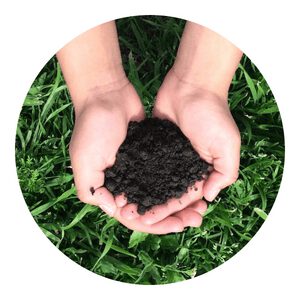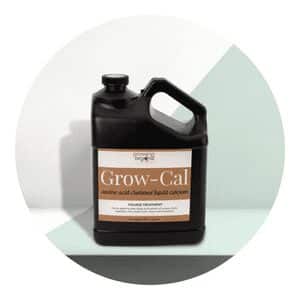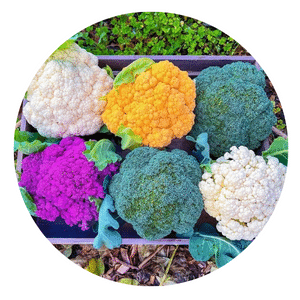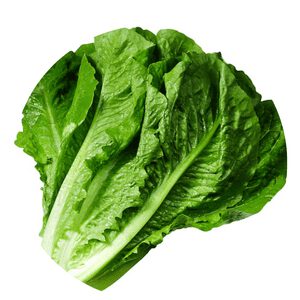What is the most common garden pests?
Chappy the gardener has been studying and observing garden pests for years, and has compiled a guide to the most common ones.
This guide will help you identify and control garden pests so that you can have a healthy, thriving garden.
The guide includes information on the following pests: aphids, caterpillars, earwigs, whiteflies, and more.
With Chappy’s help, you can get rid of garden pests for good.
This guide is a must-read for any gardener, whether you’re a beginner or an expert. So what are you waiting for?
Pest Menu
A garden pest is an insect, bird, or other small creature that eats or damages plants.
Some common garden pests are aphids, whiteflies, mites, and beetles.
bugs
Bugs are a part of life. They can be pesky, but they also have their place in the ecosystem.
Insects are an important part of the food chain, and many of them are beneficial to gardens.
Some bugs, like aphids and spider mites, can be harmful to plants, but there are ways to deal with them.
Beneficial insects, like ladybugs and lacewings, can be encouraged to stay in the garden by providing them with a hospitable environment.
By understanding the role of bugs in the garden, we can learn to live with them and even benefit from their presence.
Identification and Types of Bugs
Identifying the type of bugs present in your vegetable garden is an important step in controlling and preventing infestations.
Here are some common types of bugs found in vegetable gardens and their identifying features:
Aphids – Aphids are small, soft-bodied insects that come in a variety of colors, including green, black, and red. They feed on plant sap and can cause stunted growth and yellowing leaves.
Caterpillars – Caterpillars are the larvae of butterflies and moths, and are often found feeding on the leaves of plants. They can cause significant damage to crops if not controlled.
Whiteflies – Whiteflies are small, white insects that feed on the sap of plants and can cause yellowing leaves and stunted growth.
Cucumber Beetles – Cucumber beetles are yellow or green beetles with black stripes or spots, and they feed on the leaves, flowers, and fruit of cucumber plants.
Squash Bugs – Squash bugs are brown or gray insects that feed on the leaves and stems of squash plants, causing wilting and yellowing.
Cutworms – Cutworms are the larvae of certain species of moths, and they feed on the stems of young plants, causing them to fall over.
Slugs and Snails – Slugs and snails are common garden pests that feed on the leaves and stems of plants, causing holes and ragged edges.
By accurately identifying the type of bugs in your vegetable garden, you can effectively target and control them using appropriate measures, such as natural predators, companion planting, or organic insecticides.
Regular monitoring and early intervention are key to preventing and controlling bug infestations in your vegetable garden.
How to Get Rid of Bugs in Your Garden
There are many ways to get rid of bugs in your garden, but some methods are more effective than others.
Here are a few tips on how to get rid of bugs in your garden:
1. Use insecticidal soap. Insecticidal soap is a natural and organic way to kill bugs. It is made up of fatty acids that dissolve the outer layer of the bug’s skin, causing them to dehydrate and die.
2. Use nematodes. Nematodes are tiny worms that feed on insects. They can be used to control a wide variety of pests, including grubs, caterpillars, and fleas.
3. Use garlic spray. Garlic spray is a natural pesticide that is made from garlic cloves, water, and vinegar. It is effective against a variety of pests, including aphids, beetles, and whiteflies.
Prevention Tips for Bugs in Gardens
Preventing bug infestations in organic gardens is a crucial aspect of maintaining a healthy and productive garden.
Here are some tips for preventing bugs in your organic garden:
Crop rotation – By rotating crops each year, you can help reduce the buildup of pest populations and reduce the likelihood of infestations.
Companion planting – Certain plants, such as marigolds, can help repel pests and reduce the likelihood of infestations.
Mulching – Mulching the soil around your plants can help prevent pests from laying eggs and accessing the roots of your plants.
Proper watering – Over-watering or allowing water to accumulate around the base of plants can attract pests and create ideal breeding conditions.
Cleanliness – Keeping your garden clean and free of debris can help reduce the number of pests and prevent infestations.
Inspection – Regularly inspecting your plants for signs of pests, such as chewed leaves or eggs, can help you catch infestations early and take action to control them.
Attracting beneficial insects – Encouraging the growth of beneficial insects, such as ladybugs and lacewings, can help reduce pest populations and provide natural control.
By following these tips, you can help prevent bug infestations in your organic garden and maintain a healthy and productive garden.
Additionally, it is important to regularly monitor your plants and act quickly if you do detect an infestation, as early intervention is key to successfully controlling pests in an organic garden.
Bug Infestation Symptoms and Solutions
Bug infestations in organic gardening can be a major problem for gardeners as they can cause significant damage to plants and crops.
The following are common symptoms of bug infestations:
Chewed leaves and stems – Bugs such as caterpillars and aphids feed on leaves and stems, causing them to become ragged and distorted.
Yellowing leaves – If the infestation is severe, leaves may turn yellow and drop off, which can weaken the plant and reduce its yield.
Stunted growth – Bugs can stunt the growth of plants by feeding on their sap and nutrients.
Wilting – Infestations can also cause plants to wilt as they draw out the moisture needed for healthy growth.
To manage bug infestations in organic gardening, consider the following solutions:
Crop rotation – By rotating crops, you can reduce the buildup of pest populations and reduce the likelihood of infestations.
Companion planting – Certain plants, such as marigolds, can help repel pests and reduce the likelihood of infestations.
Handpicking – If you have a small garden, handpicking and removing pests can be an effective solution.
Natural predators – Encouraging natural predators, such as ladybugs and lacewings, can help reduce pest populations.
Neem oil – Neem oil, derived from the neem tree, is a natural insecticide that can be used to control a wide range of pests in organic gardening.
By following these strategies, you can help protect your garden from bug infestations and maintain a healthy and productive organic garden.
Beneficial Insects in the Garden
Beneficial insects play a crucial role in organic gardening by providing natural pest control and helping to maintain a healthy ecosystem in the garden.
Here are some of the most common beneficial insects in organic gardening:
Ladybugs – Ladybugs are voracious predators that feed on aphids and other soft-bodied insects, making them a valuable addition to any organic garden.
Lacewings – Lacewings feed on a wide range of pests, including aphids, mites, and caterpillars, and are also known for their delicate, lacy wings.
Parasitic Wasps – Parasitic wasps lay their eggs on the eggs or larvae of pests, such as caterpillars and aphids, providing natural control.
Ground Beetles – Ground beetles feed on slugs, snails, and other pests that damage plants and crops.
Bumblebees – Bumblebees are important pollinators that play a critical role in the growth and reproduction of plants in the garden.
Hoverflies – Hoverflies feed on nectar and pollen, but their larvae feed on aphids and other pests, providing natural control.
In order to encourage the growth of beneficial insects in your organic garden, it’s important to maintain a diverse and healthy ecosystem.
This includes planting a variety of flowers, shrubs, and trees that provide food and habitat for beneficial insects, and avoiding the use of harsh pesticides that can kill them.
By incorporating beneficial insects into your organic gardening practices, you can reduce the need for chemical pesticides and maintain a healthy and productive garden.
Bees buzzing, beetles crunching Mildew-covered leaves and dying plants A creature wreaking its wrath Invasive species destroying ants Snails and slugs peacefully dining Destroying the fruits of their beloved garden bed Agitating our summer night's peace, Pestilence of the common garden.
Chappy The Gardener
Beetle
Beetles are one of the most diverse and successful groups of insects on earth.
There are more than 350,000 different species of beetle.
While many people think of beetles as pests, they are an important part of the ecosystem.
Beetles can be found in nearly every environment on earth, from the tropics to the arctic.
One common type of beetle is the garden beetle.
Garden beetles can be found in gardens and yards throughout North America.
There are several different types of garden beetles, including the Japanese beetle, Colorado potato beetle, and Asiatic garden beetle.
Garden beetles feed on a variety of plants, including vegetables, fruits, flowers, and trees.
Garden beetles can do significant damage to crops and gardens if left unchecked.
However, they can also be beneficial by controlling populations of other pests.
How to Identify a Beetle Infestation
Beetle infestations can cause significant damage to crops and plants in a garden.
Here are some steps to identify a beetle infestation in your garden:
Check for visible insects: Look for adult beetles on leaves, stems, and flowers of plants. They may be crawling or flying around the plants.
Look for damage: Beetles can cause damage to leaves, stems, and fruit by feeding or laying eggs. Look for holes, chewed edges, or wilted leaves as signs of beetle damage.
Check for eggs: Beetles lay their eggs on leaves, stems, or the soil. Look for small clusters of eggs, often laid in rows, to confirm a beetle infestation.
Identify the beetle species: There are many different species of beetles that can infest gardens, and each has its own identifying features. Look for color, size, shape, and any distinctive markings or patterns to help identify the specific beetle species.
Monitor the infestation: Keep an eye on the affected plants and monitor the severity of the infestation. Pay attention to how quickly the beetles are multiplying and spreading to other plants.
By following these steps, you can identify a beetle infestation in your garden and take appropriate action to control it.
The earlier you catch an infestation, the easier it will be to control and prevent significant damage to your plants.
Types of Beetles That Can Cause Damage
Beetles can be a nuisance in many ways. Some beetles cause damage to crops, while others can damage wood or fabrics.
The Colorado potato beetle is a well-known pest of potatoes and other vegetables.
This beetle can inflict significant damage to crops, and it is difficult to get rid of them once they become established.
The Japanese beetle is also a damaging pest, particularly in the eastern United States.
This beetle feeds on a wide variety of plants, including trees, flowers, and vegetables.
Wood-boring beetles are another type of beetle that can cause extensive damage to wood.
These beetles drill into the wood and lay their eggs inside.
When the eggs hatch, the larvae feed on the wood, causing extensive damage.
What Damage Beetles Can Do in the Garden
Beetles are a common garden pest that can cause significant damage to plants.
There are many different types of beetles, and they can feed on a variety of plant parts, including leaves, flowers, and fruits.
Some beetles even feed on the bark of trees.
Beetle damage can cause plants to wilt, die, or produce fewer fruits or flowers.
How to Get Rid of Beetles in Your Garden
Beetles can be a nuisance in the garden, feeding on plants and flowers.
While there are many ways to get rid of beetles, some are more effective than others.
One of the most effective methods is to use a pesticide.
However, it is important to use a pesticide that is specifically labeled for beetles, as other pesticides can be harmful to plants.
Another method is to trap the beetles using bait.
There are several types of bait that can be used, including beer, sugar water, and molasses.
If the beetles are only present in a small area of the garden, they can be handpicked and destroyed.
Preventing Beetle Infestations in the Garden
The Colorado potato beetle (CPB) is a major pest of potatoes and other vegetables in North America.
CPB adults and larvae can cause extensive damage to plants, reducing yields and quality.
One way to prevent beetle infestations is to plant resistant varieties of potatoes and other vegetables.
There are many different types of resistant potato varieties available, so be sure to ask your local garden center for recommendations.
Another way to prevent beetle infestations is to keep your garden clean and free of debris.
Beetles like to hide in piles of leaves and other organic matter, so removing these materials will help reduce the number of beetles in your garden.
You can also use cultural controls to prevent beetle infestations.
Caterpillar
The caterpillar is a creature that is often found in gardens.
They are often brown or green in color and can be very small or quite large.
Caterpillars can be very helpful to gardeners because they eat the leaves of harmful plants.
However, they can also be a nuisance because they can damage plants.
Identifying Caterpillars in Your Garden
There are over 2,000 species of caterpillars in North America, and they can be found in a wide variety of habitats.
While most people are familiar with the distinctive adults of butterflies and moths, many are unaware of the caterpillars that feed on their plants.
This article will provide tips for identifying caterpillars in your garden, as well as information on how to protect your plants from these voracious herbivores.
Getting Rid of Caterpillars in Your Garden
While there are many ways to get rid of caterpillars, the most effective way is to use natural methods.
There are several ways to do this.
One is to use predator insects such as praying mantises or ladybugs.
Another is to use organic sprays such as neem oil or garlic spray.
Finally, you can make a homemade bait using water and molasses.
This bait is attractive to caterpillars and will kill them when they eat it.
Preventing Caterpillars in Your Garden
There are several things that can be done to help prevent caterpillars from taking over your garden.
One is to plant herbs and other plants that they do not like to eat.
Another is to use organic or homemade pesticides.
Finally, you can also release beneficial insects into your garden to help control the population of caterpillars.
What Do Caterpillars Eat?
Caterpillars are the larval stage of butterflies and moths.
These small, often colorful creatures can be found all over the world.
There are many different species of caterpillars, and they all eat different things.
Some caterpillars eat leaves, while others eat flowers or fruits. Some even eat other insects!
Fun Facts About Caterpillars
There are around 2,000 species of caterpillars in the world.
Caterpillars can be found on every continent except Antarctica.
The smallest caterpillar is only 1/10th of an inch long, and the largest can grow to be over 4 inches long.
Caterpillars go through four different stages of development: egg, larva, pupa, and adult.
Caterpillars eat a lot!
They can consume up to half their weight in food each day.
Caterpillars have five eyes.
grasshopper
Grasshoppers are a common sight in gardens, but they can be a nuisance to gardeners.
These insects can damage plants by eating the leaves or flowers.
They can also spread diseases.
There are steps gardeners can take to reduce the number of grasshoppers in their garden.
How to Identify a Grasshopper
Grasshoppers are insects that can be found all over the world.
They are easily identifiable by their long antennae, powerful jumping legs, and green color.
Grasshoppers typically eat plants, but some species can also eat meat.
What Damage Do Grasshoppers Cause in Gardens?
Grasshoppers are a common garden pest that can cause extensive damage to plants.
They feed on the leaves of plants, and can quickly eat through entire leaves or groups of leaves.
This can severely damage or even kill plants.
Grasshoppers also leave behind excrement that can harm plants.
How to Control Grasshoppers in Your Garden
In the late summer and early fall, you may start to see grasshoppers in your garden.
While they may not be a major pest, they can cause some damage to plants.
Here are a few tips on how to control them.
First, you can try using a pesticide.
There are many different types available, so be sure to read the label carefully and follow the instructions.
Another option is to use natural methods.
One way is to place a bucket of water with dish soap mixed in it near the plants that are being eaten.
The dish soap will kill the grasshoppers when they come into contact with it.
You can also try using a garlic spray or neem oil spray.
Both of these sprays are nontoxic and will not harm your plants or animals.
Tips for Preventing Grasshopper Infestations
Grasshoppers can be a major nuisance for homeowners, farmers, and gardeners.
These insects can cause extensive damage to crops and plants.
One of the best ways to prevent grasshopper infestations is to keep your property clean and free of debris.
Make sure to remove any piles of leaves, brush, or trash.
Grasshoppers like to hide in these areas.
Another way to prevent grasshopper infestations is to plant vegetation that they don’t like to eat.
Some good choices include marigolds, lavender, petunias, and basil.
You can also use pesticides to help control grasshopper populations. Be sure to read the labels carefully and follow all safety instructions.
FAQs About Grasshoppers and Gardens
Grasshoppers can be a challenge for organic gardeners, causing damage to crops and plants.
Here are some frequently asked questions about grasshoppers in organic gardening:
What do grasshoppers eat?
Grasshoppers feed on a wide range of plants, including leaves, stems, flowers, and fruit.
They are particularly attracted to gardens and crops, where they can cause significant damage.
How do grasshoppers damage plants?
Grasshoppers feed by chewing on the leaves and stems of plants, causing holes and wilted leaves.
In large numbers, they can completely defoliate a plant and significantly reduce yields.
What are the benefits of using organic methods to control grasshoppers?
Organic methods of controlling grasshoppers are safer for the environment and for human health.
They also promote biodiversity and help maintain a healthy garden ecosystem.
What are some effective organic methods for controlling grasshoppers?
Some effective organic methods for controlling grasshoppers include using companion plants that repel them, such as garlic or basil, encouraging the growth of natural predators, such as birds and reptiles, and using organic insecticides made from natural ingredients, such as neem oil or pyrethrin.
How can I prevent grasshopper infestations in my organic garden?
Preventing grasshopper infestations in your organic garden involves creating an environment that is unattractive to them.
This includes using companion plants that repel them, maintaining healthy soil, and providing adequate water and nutrients to your plants.
Spider
Spider populations in gardens are beneficial, as they help to control pests.
While spiders may seem scary to some people, they are generally harmless and will not bite humans unless threatened.
In fact, most spiders prefer to avoid contact with humans and other animals.
Why Spiders Are So Good At Killing Insects
Spiders are one of the best predators of insects.
They have many adaptations that make them very successful hunters.
Their webbing is sticky and traps insects, their venom paralyzes prey, and they are able to spin webs quickly.
Additionally, spiders are generalists and can eat a wide variety of prey.
This makes them very successful at controlling insect populations.
How To Get Rid Of Spiders In Your Garden
Getting rid of spiders in organic gardening can be done using various natural methods.
Here are a few:
Essential oils: Spraying a mixture of essential oils, such as peppermint or eucalyptus, can effectively repel spiders.
Vinegar: Mixing equal parts of white vinegar and water in a spray bottle can be used to deter spiders.
Cedar: Using cedar chips or balls around the perimeter of your garden can help keep spiders away.
Diatomaceous earth: This natural powder is made from the fossilized remains of algae and is harmless to humans and pets. Sprinkling it around your garden can help keep spiders away.
Companion planting: Planting herbs and plants that spiders dislike, such as mint, lemon balm, and lavender, near the perimeter of your garden can help keep spiders at bay.
Vacuum: Regularly vacuuming up spider webs and egg sacs can help reduce the spider population in your garden.
Tips For Keeping Spiders Out Of Your Garden
There are many ways to keep spiders out of your garden, but some methods are more effective than others.
The most important thing to remember is that spiders are opportunistic and will take advantage of any opening in your defenses.
Here are a few tips to help keep them out:
1. Use landscaping materials that don’t provide spiders with a place to live. For example, avoid using mulch, which can provide a hiding place for spiders.
2. Spiders like to build their webs in dark, sheltered places, so trim back any vegetation that provides too much cover.
3. Make sure all doors and windows close properly and use screens where possible.
4. Clear away any debris or piles of leaves where spiders can hide.
How To Remove A Spider From Your Garden
Spiders can be a nuisance in the garden, but they are also helpful predators of insects.
If you have a spider in your garden and you want to remove it, there are several methods you can try.
One way is to place a jar over the spider and then slide a piece of paper under the jar.
Another way is to use a hoe or rake to push the spider into a bucket of soapy water.
worm
Worms play a crucial role in organic gardening as they help improve soil structure, increase nutrient levels, and promote healthy plant growth.
Here are a few ways to incorporate worms into your organic garden:
Composting: Adding compost to your garden helps attract earthworms, which will naturally burrow through the soil and improve its structure.
Vermiculture: This involves raising earthworms in a compost bin and using their castings (excrement) as fertilizer for your plants.
No-till gardening: Avoiding the use of tillage in your garden can help protect the earthworms and their burrows, promoting a healthy soil ecosystem.
Moist soil: Earthworms prefer moist soil, so be sure to keep your garden well-watered, especially during dry spells.
Mulching: Adding a layer of mulch to your garden can help retain soil moisture, which is beneficial for earthworms and other soil-dwelling organisms.
By creating a favorable environment for earthworms, you can help improve the health of your organic garden and promote healthy plant growth.
How to prevent worms from invading your garden
Worms can be beneficial in an organic garden, but they can also cause problems if they invade your vegetable plants.
Here are a few ways to prevent worms from invading your organic vegetable garden:
Crop rotation: By rotating your crops every season, you can help prevent the buildup of soil-borne pests, including worms.
Companion planting: Planting companion plants such as marigolds, garlic, or basil near your vegetables can help deter worms and other pests.
Floating row covers: Covering your vegetable plants with floating row covers can help prevent worms and other pests from reaching the plants.
Handpicking: Regularly checking your plants for signs of worm damage and handpicking any worms you find can help reduce their population.
Natural predators: Encouraging natural predators, such as birds and beneficial insects, can help keep worm populations in check.
Neem oil: Using neem oil as a natural pesticide can help prevent worm damage to your vegetable plants.
By following these steps, you can help prevent worms from invading your organic vegetable garden and keep your plants healthy and productive.
What are the signs of a worm infestation in the garden?
It can be difficult to determine if your garden has a worm infestation.
However, there are a few signs you can look for.
The most obvious sign is that your plants are not growing as well as they should be.
Additionally, you may notice that the leaves on your plants are wilted or have holes in them.
Another indication of a worm infestation is when you see worms crawling on the surface of the soil.
If you suspect that your garden has a worm infestation, it is best to take action right away.
Beneficial worms in the garden
Worms are beneficial to an organic vegetable garden as they help improve soil structure and fertility.
They do this by consuming organic matter and excreting nutrient-rich compost, which enriches the soil and provides a better growing environment for plants.
Worms also help aerate the soil, reducing soil compaction and promoting root growth.
Their burrowing activities also create channels for water and air to circulate, which benefits plant roots.
Additionally, worms are natural predators of many garden pests and help control populations, reducing the need for chemical pesticides.
Overall, incorporating worms into an organic vegetable garden is a natural and sustainable way to promote healthy plant growth and soil health.
In conclusion, the most common garden pest is the slug.
They are easy to identify due to their slimy trail, and they can wreak havoc on gardens and plants.
There are a few things that you can do to deter slugs from your garden, including using copper foil, salt, or beer.
By following these tips, you can keep your garden pest-free!
Click To Grow
Helps Us Grow – Share If You Like


























